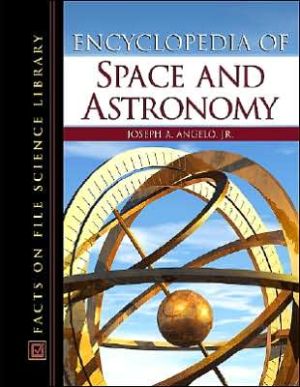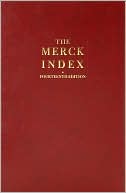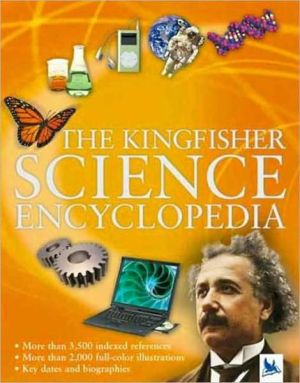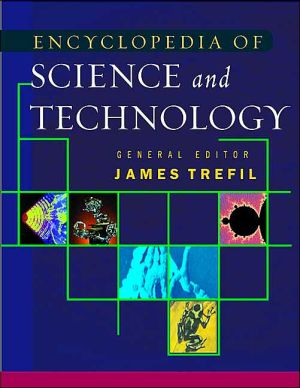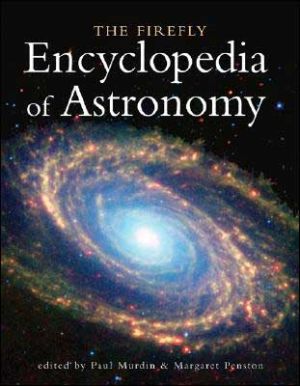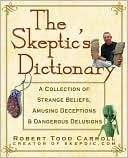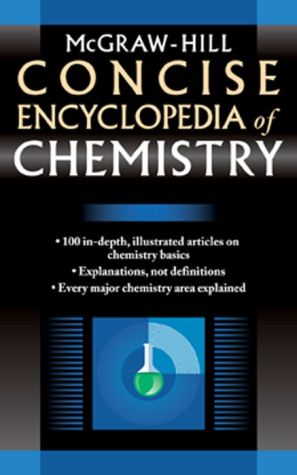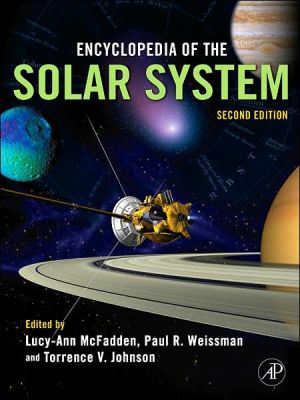Encyclopedia of Space and Astronomy
"Providing current and accurate information, Encyclopedia of Space and Astronomy is a useful reference for high school and college students. Comprehensive coverage includes significant breakthroughs in space and astronomy, in addition to definitions of basic related terms, thought-provoking essays, and capsule biographies of notable scientists. Written in an easy-to-understand format, the encyclopedia examines the technical, social, and philosophical influences that space and astronomy have...
Search in google:
"Providing current and accurate information, Encyclopedia of Space and Astronomy is a useful reference for high school and college students. Comprehensive coverage includes significant breakthroughs in space and astronomy, in addition to definitions of basic related terms, thought-provoking essays, and capsule biographies of notable scientists. Written in an easy-to-understand format, the encyclopedia examines the technical, social, and philosophical influences that space and astronomy have on contemporary life." Featuring more than 3,000 cross-referenced entries, the encyclopedia includes 15 essays, interspersed throughout the text, that discuss a variety of topics, including the hazards of space travel, space technology and national security, and the consequences of interstellar contact. The volume is enhanced by more than 200 black-and-white illustrations, photographs, and charts. The encyclopedia also includes five helpful appendices - a bibliography of print resources, an extensive list of Web sites, a chronology of significant events in space and astronomy, a table of basic planetary data, and a breakdown on how planets and other celestial bodies were named - as well as an extensive index. VOYA A splendidly informative new encyclopedia provides a treasure store of information dealing with astronomy and space technology, not to mention some geology and mathematics. Since the launch of Sputnik in 1957, scientists have used satellites to collect information about the universe and the electromagnetic spectrum previously masked by the earth's atmosphere. Spacecraft have penetrated far into the solar system, relaying information about planetary neighbors. This very comprehensive book serves as a guide to concepts, principles, and events of new knowledge; celestial objects and phenomena; and the people who have expanded an understanding of the universe. Biographies range from short to quite lengthy, and the latter really illuminate the accomplishments and trials of leading scientists throughout the ages (Aristotle is one of the earlier ones). Scattered throughout are fifteen interesting short essays, including: Reaching Beyond the Solar System and Space Technology and National Security. Five appendixes provide valuable information through further reading, extensive Internet resources, a chronology, planetary data, and naming of celestial objects. This volume is not a picture book with brief patches of text. It assumes some science knowledge, and the black-and-white photos, diagrams, and artists' renderings supplement rather than replace text. It will be endlessly fascinating for those with a real interest in the topics of astronomy, space technology, and space exploration, and a valuable resource for high school astronomy and physics classes and in college science libraries.
\ VOYA - Rayna Patton\ A splendidly informative new encyclopedia provides a treasure store of information dealing with astronomy and space technology, not to mention some geology and mathematics. Since the launch of Sputnik in 1957, scientists have used satellites to collect information about the universe and the electromagnetic spectrum previously masked by the earth's atmosphere. Spacecraft have penetrated far into the solar system, relaying information about planetary neighbors. This very comprehensive book serves as a guide to concepts, principles, and events of new knowledge; celestial objects and phenomena; and the people who have expanded an understanding of the universe. Biographies range from short to quite lengthy, and the latter really illuminate the accomplishments and trials of leading scientists throughout the ages (Aristotle is one of the earlier ones). Scattered throughout are fifteen interesting short essays, including: Reaching Beyond the Solar System and Space Technology and National Security. Five appendixes provide valuable information through further reading, extensive Internet resources, a chronology, planetary data, and naming of celestial objects. This volume is not a picture book with brief patches of text. It assumes some science knowledge, and the black-and-white photos, diagrams, and artists' renderings supplement rather than replace text. It will be endlessly fascinating for those with a real interest in the topics of astronomy, space technology, and space exploration, and a valuable resource for high school astronomy and physics classes and in college science libraries.\ \ \ \ \ Library JournalThis one-volume encyclopedia, edited by Angelo (physics, Rollins Coll.; The Facts On File Space and Astronomy Handbook), focuses on technological breakthroughs in space astronomy, e.g., the latest telescopes and spacecraft gathering data on the universe. It also covers astrophysics, cosmology, spaceflight, and planetary science and includes capsule biographies of astronomers and definitions of basic terms. More than 3000 cross-referenced entries, some up to several pages long, are illustrated with 200-plus black-and-white photographs and diagrams. Fifteen essays on such topics as the consequences of interstellar contact and the hazards of space travel are interspersed throughout. The appendixes include a bibliography of print resources, a list of web sites, a chronology of significant events, a table of basic planetary data, a breakdown of the naming of celestial bodies, and a detailed index. Some of the entries in this work are the same as those in the author's The Facts On File Dictionary of Space Technology (1999. 2d ed.), but space technology has greatly changed in the last few years, making this new work valuable. The explanations of complex topics such as dark matter and black holes are especially clear. Bottom Line This encyclopedia covers much the same subject matter as David Darling's The Complete Book of Spaceflight: From Apollo 1 to Zero Gravity (Wiley, 2002. 4th ed.) but is more comprehensive, has clearer definitions, and is better cross-referenced. Libraries already owning Patrick Moore's Astronomy Encyclopedia: An A-Z Guide to the Universe (Oxford Univ., 2002) may choose to pass on this work, for the two books are of similar coverage and quality. This introductory level work is recommended for high school, academic, and larger public libraries and astronomy collections.-Jeffrey Beall, Univ. of Colorado at Denver & Health Sciences Ctr. Copyright 2006 Reed Business Information.\ \
